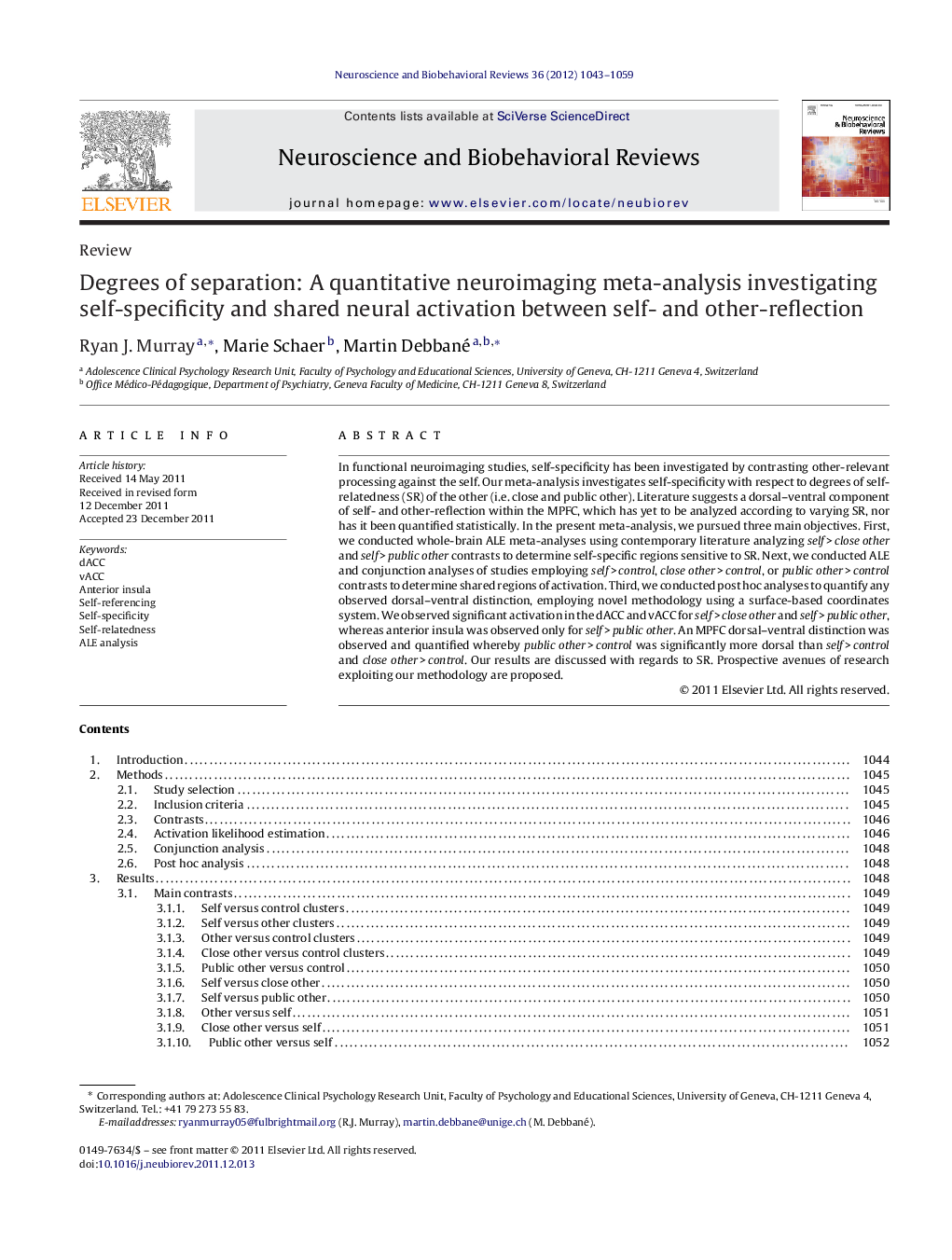| Article ID | Journal | Published Year | Pages | File Type |
|---|---|---|---|---|
| 937567 | Neuroscience & Biobehavioral Reviews | 2012 | 17 Pages |
In functional neuroimaging studies, self-specificity has been investigated by contrasting other-relevant processing against the self. Our meta-analysis investigates self-specificity with respect to degrees of self-relatedness (SR) of the other (i.e. close and public other). Literature suggests a dorsal–ventral component of self- and other-reflection within the MPFC, which has yet to be analyzed according to varying SR, nor has it been quantified statistically. In the present meta-analysis, we pursued three main objectives. First, we conducted whole-brain ALE meta-analyses using contemporary literature analyzing self > close other and self > public other contrasts to determine self-specific regions sensitive to SR. Next, we conducted ALE and conjunction analyses of studies employing self > control, close other > control, or public other > control contrasts to determine shared regions of activation. Third, we conducted post hoc analyses to quantify any observed dorsal–ventral distinction, employing novel methodology using a surface-based coordinates system. We observed significant activation in the dACC and vACC for self > close other and self > public other, whereas anterior insula was observed only for self > public other. An MPFC dorsal–ventral distinction was observed and quantified whereby public other > control was significantly more dorsal than self > control and close other > control. Our results are discussed with regards to SR. Prospective avenues of research exploiting our methodology are proposed.
► We conduct a meta-analysis on self- and other-reflection using fMRI and PET studies. ► We investigate self-specificity in relation to self-relatedness (SR) of the other. ► We statistically quantify any dorsal–ventral component observed between self and SR. ► Anterior insula is self-specific only when masked against a public other. ► Within the MPFC, public other is significantly more dorsal than self and close other.
